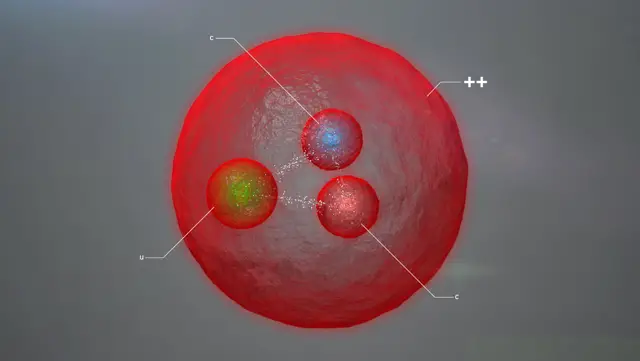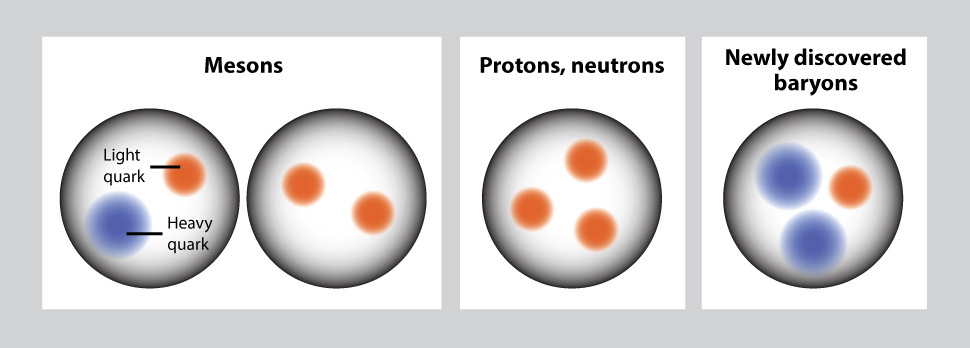
10th July 2017 Large Hadron Collider detects new particle Physicists at CERN's Large Hadron Collider (LHC) report the detection of Xi-cc++ (pronounced ka-sigh-see-see-plus-plus), a new particle containing two charm quarks and one up quark.
At the EPS Conference on High Energy Physics in Venice, the LHCb experiment at CERN's Large Hadron Collider has reported the observation of Ξcc++ (Xicc++) a new particle containing two charm quarks and one up quark. The existence of this particle from the baryon family was expected by current theories, but physicists have been looking for such baryons with two heavy quarks for many years. The mass of the newly identified particle is about 3621 MeV, almost four times heavier than the most familiar baryon, the proton, a property that arises from its doubly charmed quark content. It is the first time that such a particle has been unambiguously detected. Nearly all the matter that we see around us is made of baryons, which are common particles composed of three quarks – the best-known being protons and neutrons. But there are six types of existing quarks, and theoretically many different potential combinations could form other kinds of baryons. Baryons so far observed are all made of, at most, one heavy quark. "Finding a doubly heavy-quark baryon is of great interest as it will provide a unique tool to further probe quantum chromodynamics, the theory that describes the strong interaction, one of the four fundamental forces," said Giovanni Passaleva, spokesperson for the LHCb experiment. "Such particles will thus help us improve the predictive power of our theories." "In contrast to other baryons, in which the three quarks perform an elaborate dance around each other, a doubly heavy baryon is expected to act like a planetary system, where the two heavy quarks play the role of heavy stars orbiting one around the other, with the lighter quark orbiting around this binary system," added Guy Wilkinson, former spokesperson of the collaboration.
Measuring the properties of the Ξcc++ will help to establish how a system of two heavy quarks and a light quark behaves. Important insights can be obtained by precisely measuring production and decay mechanisms, and the lifetime of the particle. The observation of this new baryon proved to be challenging and was made possible owing to the high production rate of heavy quarks at the LHC and to the unique capabilities of the LHCb experiment, which can identify the decay products with excellent efficiency. A paper on this finding has been published online. Previous discoveries of the Large Hadron Collider have included pentaquarks and, of course, the Higgs Boson. In 2015, the machine underwent a major upgrade that boosted its power from 8 to 13 trillion electron volts (TeV). It will be given yet another boost in 2026, when it becomes the High Luminosity Large Hadron Collider (HL-LHC), increasing its luminosity by a factor of ten. An even larger successor, known as the Very Large Hadron Collider (VLHC) is expected to be operational from 2035 to 2075. ---
Comments »
|








